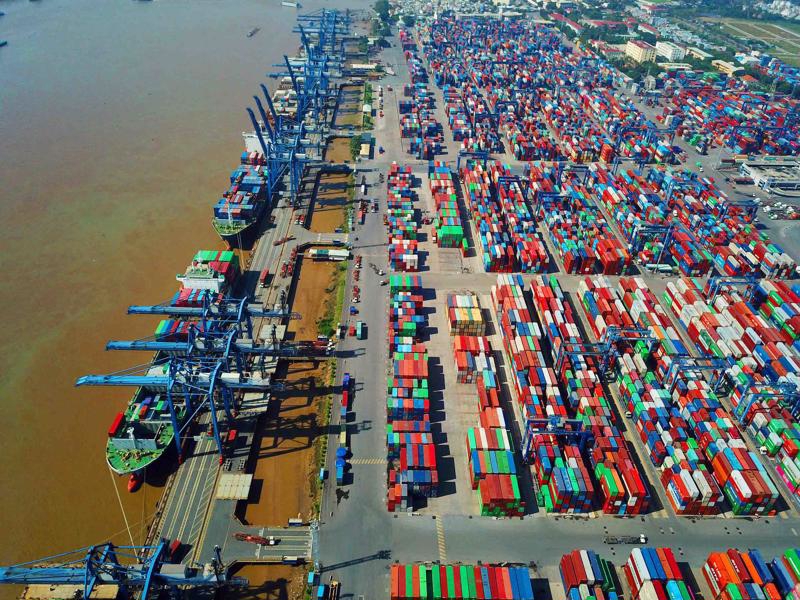Under Plan No. 12714/BGTVT-VT on transport network development in Ho Chi Minh City to 2030 with a vision to 2045, issued recently by the Ministry of Transport, priority will be given to transport corridors to seaports and other localities in Vietnam’s south.
The plan aims to further improve passenger transport and logistics infrastructure as well as cargo handling capacity and warehousing at seaports in service of supply chains, thus creating a regional logistics service center in the southern city.
Its transport market will also be restructured, with priority given to developing and improving railway, inland waterway, and air transport in order to ease pressure on road transport.
Container transport services on railways and inland waterways will be encouraged and container handling capacity will be improved, while due attention will be paid to environmental protection.
The ministry also asked the city to make greater efforts in applying information technology in the management of transport activities, especially new and modern technologies for transportation and logistics services such as automatic technology, the Internet of Things (IoT), and AI, etc., to create a breakthrough in the State management of transport services and improve the capacity of such services in line with Industry 4.0, including radio frequency identification (RFID) technology applied at automated toll booths.
Green transition will be applied in the urban transport network in the 2022-2030 period, with public passenger transport services meeting 25 per cent of market demand, and by 2025, 100 per cent of old buses will be replaced by electric buses or buses using green energy. All new buses will be electric or use green energy.
Then, in the period between 2031 and 2050, the city’s public passenger transport services must meet 40 per cent of market demand, and by 2030, electric vehicles and vehicles using green energy must account for 50 per cent of total passenger transport. All taxi services are to use electric vehicles or vehicles using green energy. By 2050, electric buses or those using green energy will be put into service.









 Google translate
Google translate